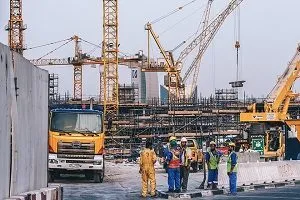
Springtime Spotlight: Construction Sites
Spring is here and construction projects are starting! Have you spoken with your contractor/construction insureds about their coverage?
Because of the variety of activities and types of contractors involved with construction operations, the exposures at these construction sites can be varied and complex. Environmental exposures at construction sites have increased within the last decade as a result of new environmental regulations governing certain construction sites/activities, more public awareness of the materials emanating from these sites, and an increase in urban revitalization. Not only do construction personnel have to be aware of lead, asbestos, PCB’s, or other hazardous materials handling and disposal, but they need to know who is responsible for broader site environmental concerns such as Spill Prevention, Countermeasure and Control (SPCC) plan implementation, and ensuring that fuel transfer requirements are met, among other concerns.
Environmental considerations for construction sites:
- Clearing, site grading, excavation activities.
- Releasing contaminants at a job site, either through chemicals or equipment brought onto job site, or those that are already at a job site.
- Transporting waste or materials to or from a job site.
- Disposal of waste at non-owned facilities.
- Insured’s owned premises – Contamination at owned premises caused by the maintenance or storage of heavy equipment, mobile equipment, or vehicles.
Insurance solutions for contractors at construction sites:
Contractors Professional Liability (CPL/E&O)
- Contractor spills chemicals brought onto property.
- Contractor disturbs asbestos at site.
- Contractor releases lead paint dust at property.
- Contractor breaches building envelope causing moisture and subsequent mold to flourish inside a building.
- Contractor may make a slight adjustment on the provided plans to get the job done properly, or supervise other subcontractors.
Premises Pollution Liability (EIL)
- Unknown site pollution not discovered during environmental site assessments.
- Indoor Air Quality related conditions that arise during construction, normal operations, or construction activities.
- Spills of maintenance/construction chemicals.
- Pollutants coming onto property from neighboring properties.
- Contractor discovers released pollutants at property (but did not cause release).
- Environmental conditions not adequately addressed in indemnification agreements.
- Pollution uncovered during development/redevelopment excavation activities.
Transportation Pollution Liability (TPL)
- Spills while materials such as paints (that may or may not contain lead), asbestos, silica, lacquers, or oils are being transported or loaded/unloaded at properties.
- Spills of chemicals that contractors brought to job site at property during loading/unloading at property or away from property.
- Spills of waste materials during loading/unloading at property or during transportation to disposal site or during loading/unloading at disposal site.
Non-owned Disposal Site Coverages (NODS)
Disposal by contractors of construction debris such as paints that may or may not contain lead, asbestos, silica, lacquers, or oils at disposal sites.
- Certain underground storage tanks holding petroleum are required to have financial assurance.
- Certain states require manufacturers or installers of underground storage tanks or piping to have financial assurance.
Construction Wrap Up Policies
A Construction Wrap Up Policy is typically controlled by the OCIP or CCIP. The owner or construction manager procure certain insurance coverages on behalf of some or all of the parties working at a job site, rather than having each firm supply its own insurance. The chain of liability under a wrap up policy is not shifted, as any insured under a wrap up is still responsible for their own actions.
For more information on insurance for contractors and people involved with construction sites, contact us.
Learn more about insurance for contractors.
Type: Blog
Topic: construction